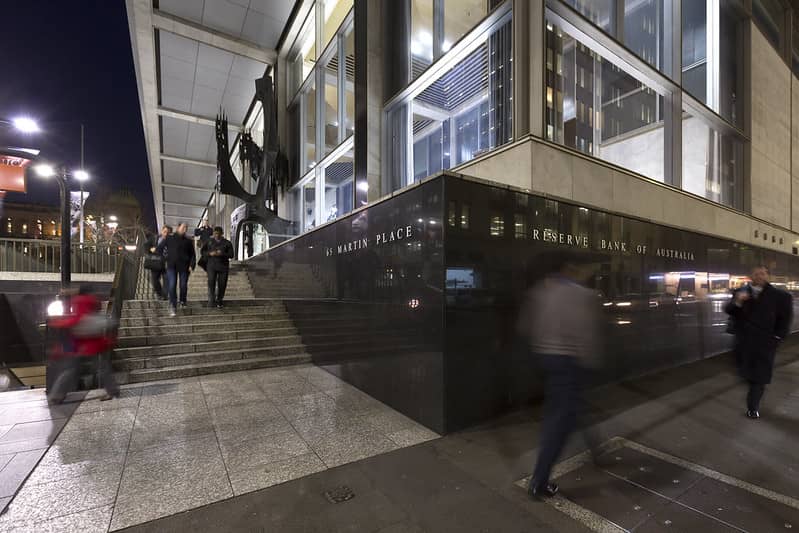Australian Dollar In Surprise Fall on RBA Rate Hike Guidance, Chinese Data Disappointment
- Written by: Gary Howes
-

Image © RBA.
The Australian Dollar recorded sizeable losses against the Pound, Euro, U.S. Dollar and other major currencies following the Reserve Bank of Australia's decision to raise interest rates and mixed trade data out of China.
The RBA hiked the Cash Rate by 25bp to 4.35% after four consecutive holds in previous meetings in a decision that acknowledged the unexpectedly strong inflation reading of the third quarter.
The decision to raise rates was widely anticipated by the consensus and was 'in the price' of the Australian Dollar and Aussie bond markets ahead of the decision, meaning the decision itself was unlikely to rock markets.
This left the market watching guidance pertaining to future policy decisions, and on this count, the outcome was judged dovish for the Aussie Dollar as the Statement dropped the message that "further tightening may be required".
The Pound to Australian Dollar exchange rate rose 0.83% to 1.9178 at the time of writing, the Euro to Australian Dollar is up by a similar degree to 1.6645, and the Australian-U.S. Dollar rate is lower by nearly one per cent at 0.6427.
"Although the RBA hike was expected by the majority of the forecast community, markets were not completely sold on the idea, which is why it is curious that the AUD weakened on the decision and that bond yields fell," says Robert Carnell, Regional Head of Research for Asia-Pacific at ING Bank.
"AUD/USD initially jumped above 0.6500 after the RBA delivered the widely expected 25bp rate hike. But AUD/USD subsequently weakened to around 0.6430 as markets digested the Governor’s Statement which was slightly more dovish than the previous one. The main shift was a modification in its tightening bias to read a little softer," says Carol Kong, a strategist at Commonwealth Bank of Australia (CBA).
CBA economists do not expect another rate hike, although they acknowledge this cannot be entirely discounted.
Analysts at Westpac say a December rate hike is off the table owing to the lack of data that will be released before the meeting, but another hike in early 2024 is still likely.
It is noted the RBA raised inflation forecasts for 2024 while lowering unemployment forecasts, which are two 'hawkish' developments from a guidance perspective.
"Given the upgraded inflation forecasts and lower unemployment forecast, though, they are likely to have even less tolerance for upside surprises than they indicated in recent communication. So while a December move is unlikely, it is more likely that February meeting would become 'live' if the inflation outlook continues to lift," says Luci Ellis, Chief Economist at Westpac Group.
Above: AUD/USD (top) and GBP/AUD. Set up a daily rate alert email to track your exchange rate OR set an alert for when your ideal exchange rate is triggered ➡ find out more.
A further hike can offer the Aussie Dollar some support in the future, but the rally in Aussie bonds and the selloff in AUD suggest investors see such an outcome as less likely than was the case before the meeting.
Also weighing on the Australian Dollar is a disappointing set of Chinese data that suggests Australia's largest trading partner continues to see an anaemic recovery.
To be sure, Chinese imports recovered more than expected (+3.0% y/y, consensus -4.8%), suggesting that the recent policy easing supports domestic demand.
But in contrast, exports fell more sharply than anticipated (-6.4% y/y, against consensus expectations for -3.3%), as tightening financial conditions are restricting demand elsewhere.
The overall trade balance weakened as the surplus declined to USD56.5BN (from USD77.7BN).
"The surprisingly positive imports print suggests decent domestic demand in October. It was the first positive y/y imports reading since February. On the flipside, the exports slump is persisting," says Alvin T. Tan, Asia FX Strategist at RBC Capital Markets.












